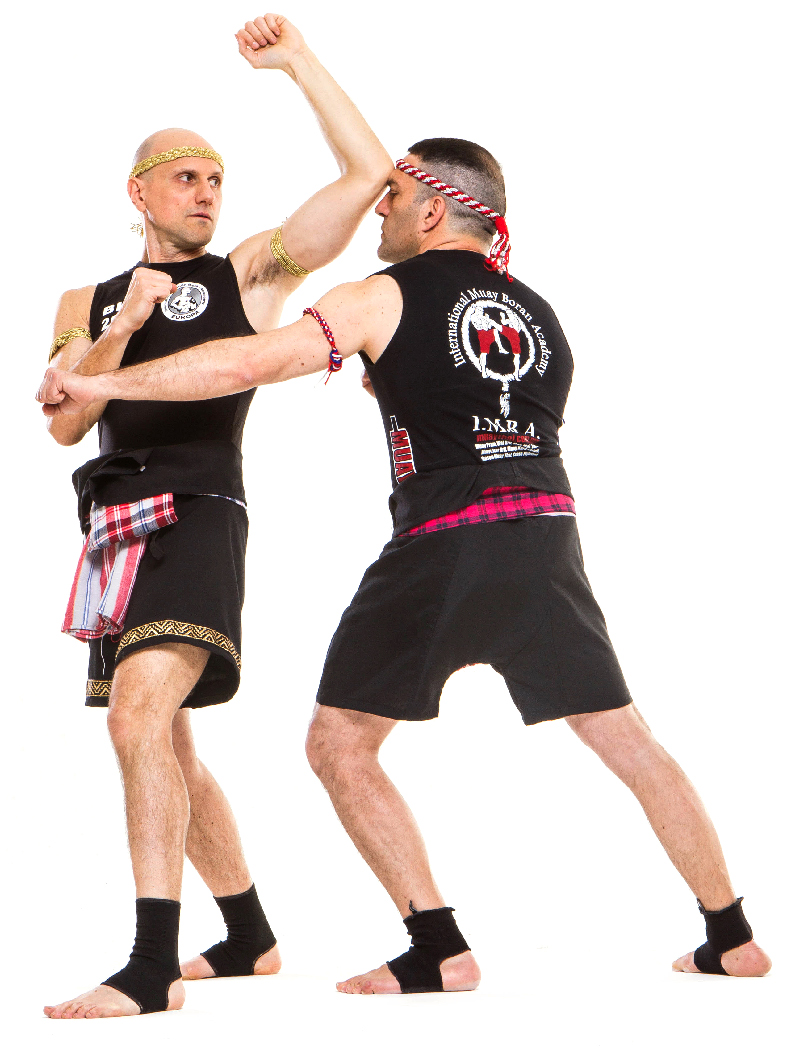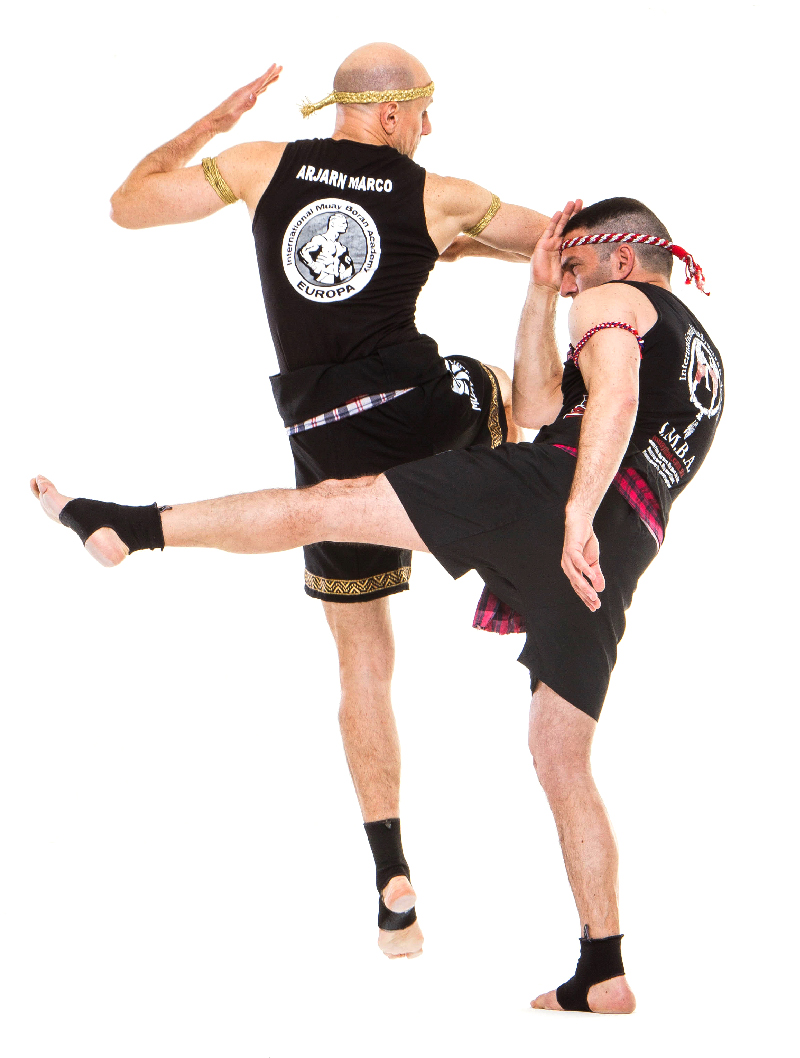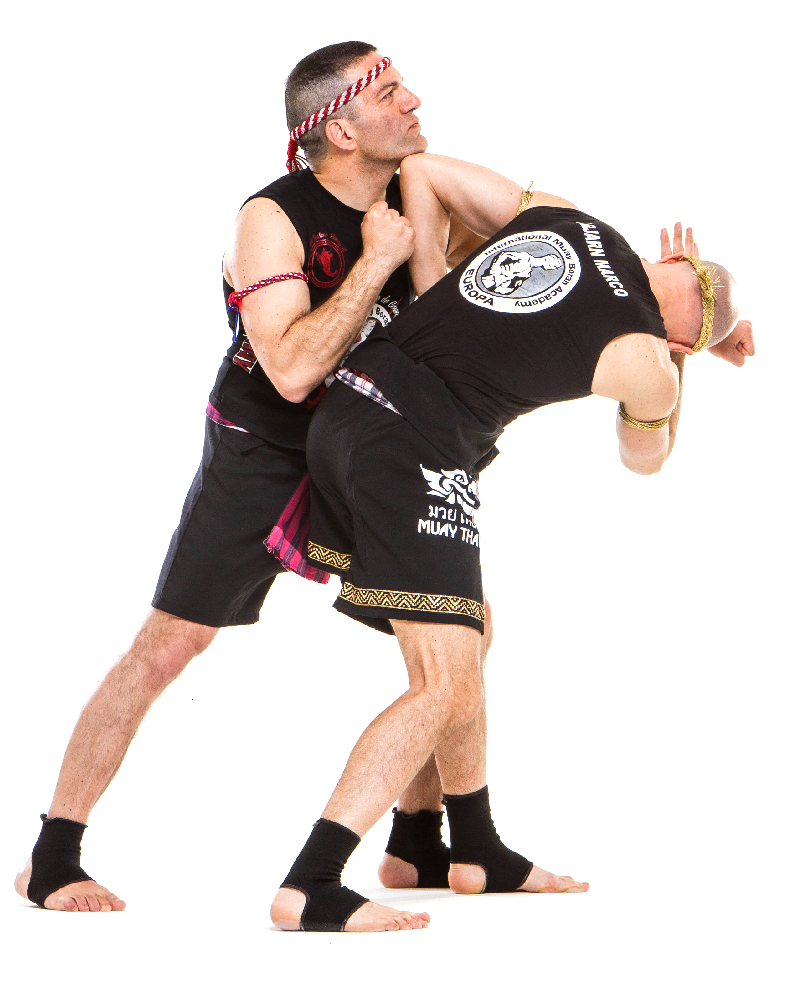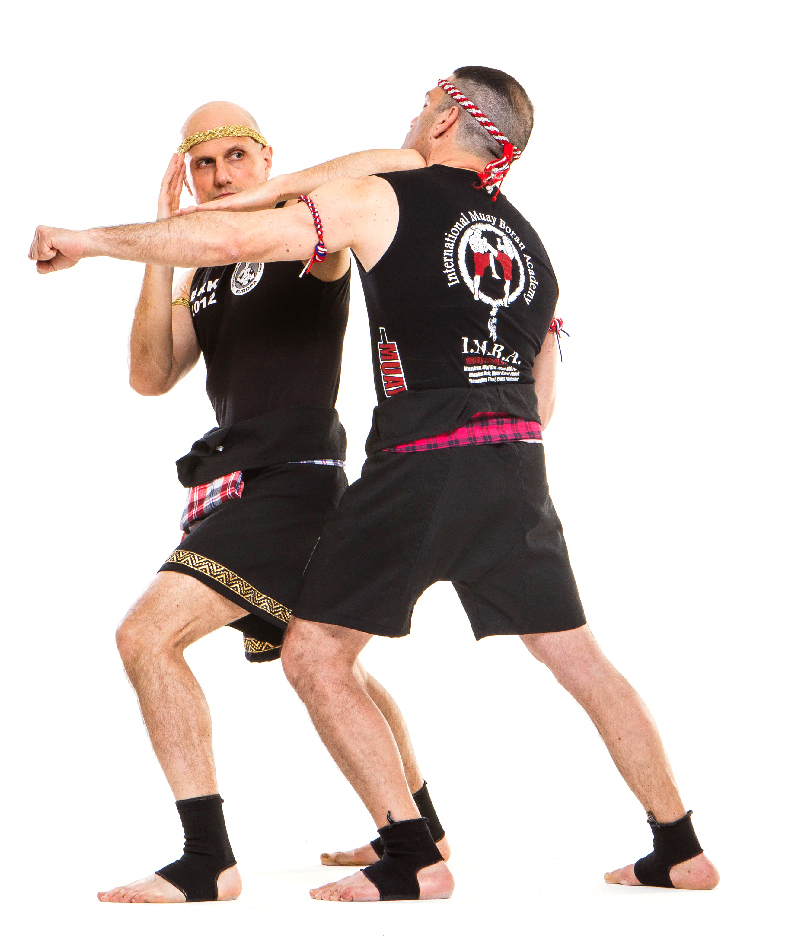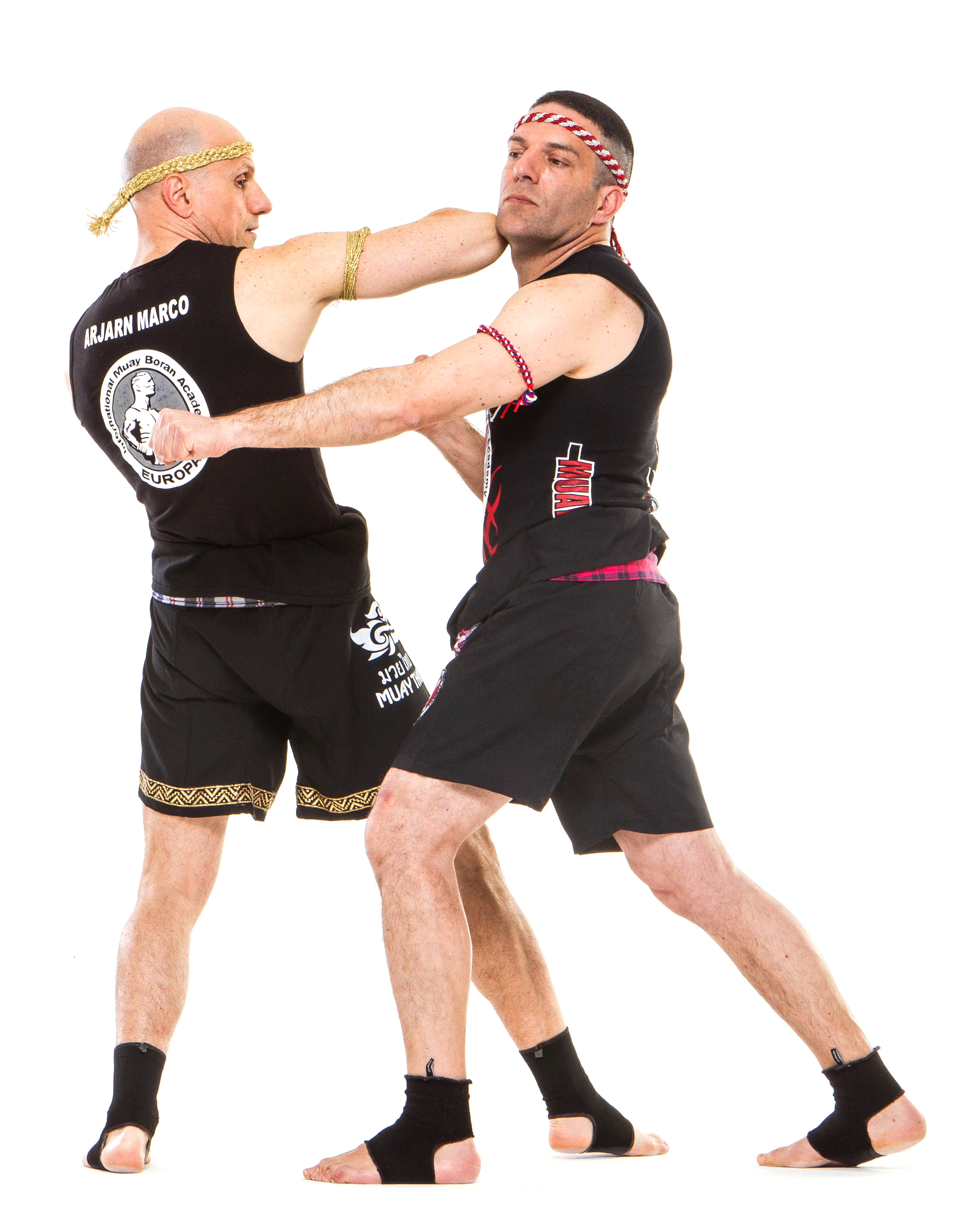
Pol Prapradaeng, the genius of Sok Glab Lang.
By Marco De Cesaris
Pol Prapradaeng was setting a trap. By repeatedly sidestepping and apparently avoiding the fight, he induced his powerful opponent Suwan Janmee-on to chase him. All of a sudden Pol stopped running and nailed fiery Suwan with a lightning fast elbow strike. That blow was not a “common” elbow; instead, it was a spectacular spinning back elbow strike that landed squarely on Suwan’s chin, knocking him out cold. This was the first time a boxer was so skillful as to defeat his opponent with such an elbow, during Rattanakosin Era. That day, Pol Prapradang made history.
The main characters of this article are two, actually: the all-time great Thai Boxer and his trademark technique, the spinning elbow strike or Sok Glab Lang.
Let’s start with the first protagonist.
Pol Prapradaeng’ real name was Pol Pun-serm and, as many other strong Thai fighters came from the Lopburi Province. Born in 1921 he quickly ascended to the throne of Best Thai Boxer of the country thanks to his speed, skill and strong personality. He became famous for creating a beautiful Ram Muay he called Hanuman swatting mosquitos that soon became legendary. He fought innumerable times: it is recorded that he totalled 350 bouts in his long career full of success (he boxed until he was 41). Those 350 fights also included a good number of Western Boxing bouts: in fact, Pol was the first Thai to be internationally ranked in the Bantamweight division (number 8 in the world).
Among the many Muay Thai techniques he perfected, Sok Glab Lang was the one that everybody considered his most dangerous weapon. No reference to Sok Glab Lang could be made or article could be written without mentioning this great Champion who can be considered the best example of skill in the use of the spinning back elbow.
-Sok Glab Lang’s origins.
Along the decades this elbow technique has been refined and developed by hundreds of Masters and Champions of Muay. In every area of Thailand traditional local styles included this Mai Muay even if in each region the name used to refer to this maneuver was different. According to the specific application, the technique’s name referred to the actions of various animals: elephants, snakes, birds, monkeys, deers. Otherwise, the unknown creators of this technique used a name linked to a mythical character included in Ramayana: Hiranyaksa, Virunok, Nang Montho, Phra Narai. Any name bears in itself one of the characteristics of the spinning back elbow: the source of energy, the way to use this energy, the angle of attack, a specific way to turn the body.
-Power source.
The spinning elbow is an extremely powerful strike, capable of knocking out even the strongest opponent when properly delivered. The source of this great power is the core of the body. In fact, by using the strong muscles located in the pelvis, the lower back and the abdominal area, the whole body mass violently spins around its axis: this strong action is called Mun Tua in Thai language. The hips must move first and the shoulders must follow, thus creating a sling effect that charges the elbow strike with maximum energy. The legs can have a supporting role by contributing to guarantee the body’s balance either with a full step or with a half step. In the latter case the back foot should press the floor to add energy and stability to the elbow strike.
-Types of Sok Glab.
There are two basic ways to execute Sok Glab. The first kind is the real spinning back elbow or Sok Glab Lang. In this case a full turn is put in place and the back (Lang) of the executor faces the target. The second kind is the Sok Glab: the executor makes a half turn and his back is only partially facing the opponent. The first type has greater power but it is more difficult to control: the executor turns his head around and for an instant loses sight of the opponent. On the other hand, the second type is less powerful but guarantees a better control and allows the striker to never lose sight of the target.
-Angles of attack.
Sok Glab Lang is a complex maneuver that can be executed in a variety of ways. The main distinction between the various applications regards the angle of impact. In fact, when the spinning elbow is launched towards the target, the attacking arm can follow as many as 5 basic paths. The strike can be horizontal, vertical downwards, diagonal downwards, diagonal upwards, vertical upwards. Each one of these spinning elbows has pros and cons. A good Muay Thai Boran Master should know them all and should teach his students how to apply each variation according to the various fighting situations he could possibly face.
-Offensive Sok Glab Lang.
Sok Glab Lang is a strong and deceptive offensive maneuver. However, it should never be used as an entry technique because it can be easily detected by an experienced fighter whose reaction could badly hurt the attacker. The best way to apply the spinning elbow offensively is to prepare the attack by a fake strike, usually a punch or a swing kick. In the first case, a fake swing punch to the face of the opponent will distract and pave the way to an unexpected spinning back elbow. Otherwise, a high or low fake swing kick, starting from a longer distance, will obtain the same result, that is to say distraction of the opponent and better positioning of the executor. In both cases, the initial body turn employed for the fake strike will greatly help a swift and powerful execution of the spinning elbow.
-Defensive Sok Glab.
The spinning back elbow is a typical counterattack against a charging opponent. Pol Phrapradang perfectly demonstrated the lethal efficiency of this strike as a counter move in the ring. The strike can basically be used as a counter in the following 4 situations:
1.When the opponent steps forward carelessly
2.When the opponent punches (Chok)
3.When the opponent throws a Swing Kick (Tae)
4.When the opponent throws a Straight Kick (Tiip)
Let’s analyse these 4 situations.
1.This is exactly what happened in Pol’s fight. When an enraged opponent charges, he fatally opens big gaps in his defense. A smart counter fighter should provoke the opponent and push him to attack carelessly in order to expose his weak areas. When the adversary steps forward the defender should sidestep, spin and unleash an explosive spinning back elbow strike aimed at the side of the head or face. This is a true knock-out blow.
2.A head punch can be very fast and extremely difficult to counter. However, with good defensive tactics the aggressor can be put in condition to be countered with relative ease. For example, against a straight punch, a parry followed by a spinning elbow is a very effective counterattack. Many traditional styles of Muay included this technique in their syllabus because of its deadly efficiency. The name of this Mai Muay can differ according to the area of Thailand where the style originated but the fighting principle is the same: wait for the opponent’s punch, deflect and spin at the same time and deliver the back elbow to the head or ribcage. Strong technique, perfect against big opponents.
3.When the opponent attacks with a roundhouse kick to the body, the defender can cope with the attack in many ways: for instance, he can block the kick with the elbows, stop it with the palm, sidestep it or catch the kicking leg. In all of these cases, the defensive maneuver can be followed by a Sok Glab Lang. A fast boxer may prefer to deprive the kick of its power by stepping towards the kicker and without even caring to block the attack he would spin and throw a Sok Glab to the attacker’s head. Otherwise, a boxer gifted with a strong body would opt for catching the kicking leg, keep the opponent in place and follow up with a spinning elbow. This same tactic can be used by employing a hard elbow block (instead of the leg catch) followed by a back elbow strike.
4.Even if this application is not frequently used, lovers of traditional Muay know it well and know how effective it can be. A back leg Tiip Trong is sometimes used as a thrust kick, aimed at piercing through the opponent’s wall of defence. Against a thrust front kick, one of the best defensive option is a diagonal forward step or Sab Nai: if this sidestep is executed with good timing, the offender’s balance will be temporarily broken and he will be forced to fall forward, heavily. On the other hand, the defender will be out of the line of fire and in a perfect position to spin around and throw a Sok Glab Lang to the opponent’s head. A dramatic knock out is a highly likely outcome.



